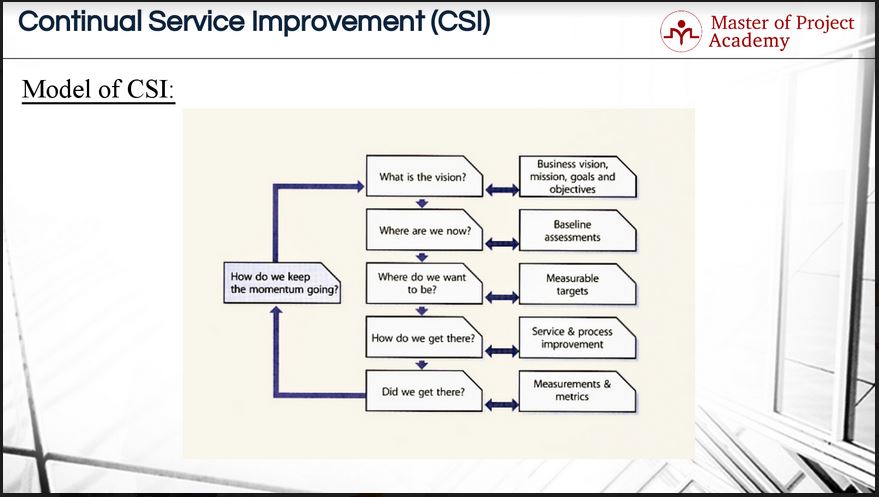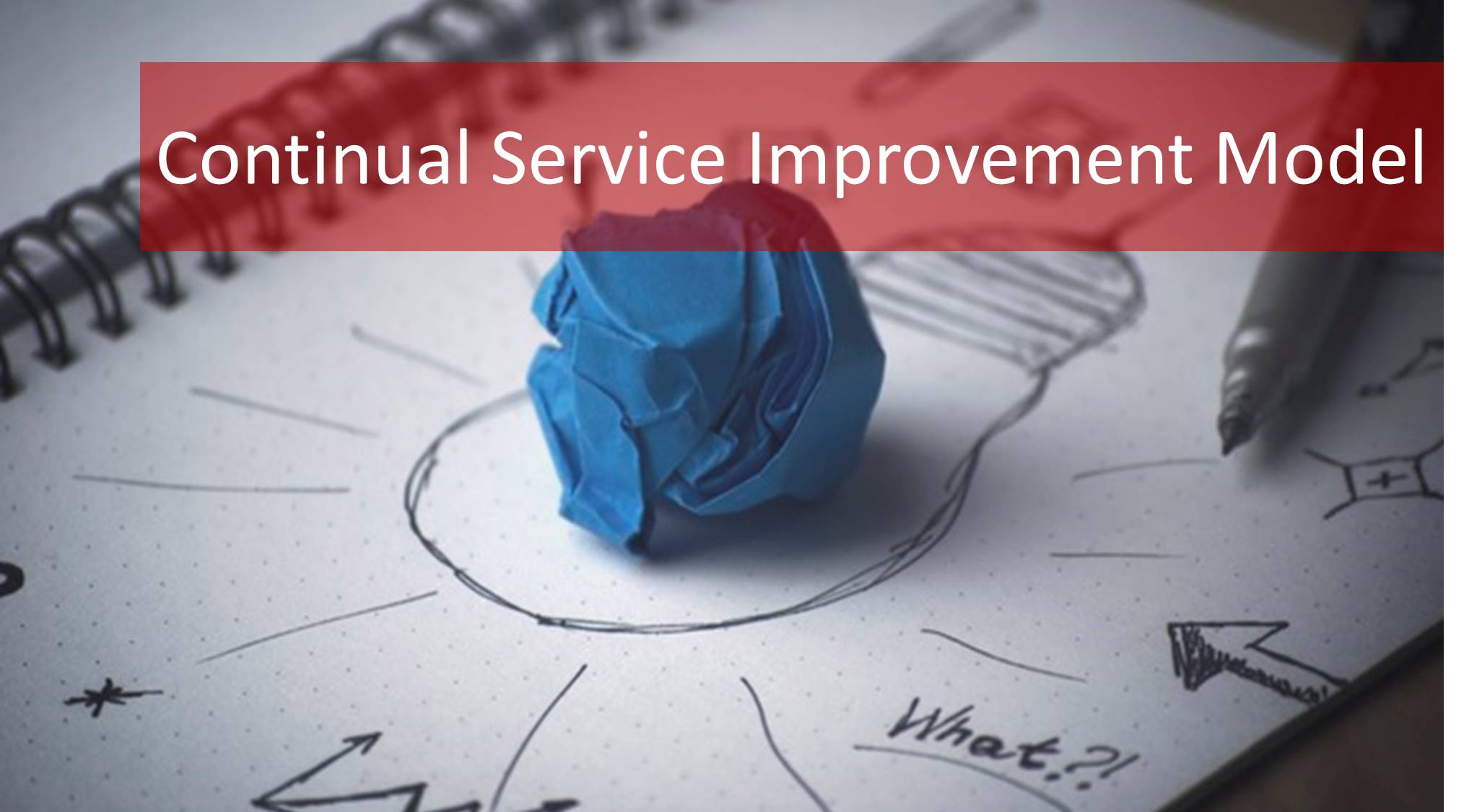Let’s ask an important question from ITIL Foundation exam: What is Continual Service Improvement? Continual improvement is a primarily metrics-driven way to identify gaps for improvement and to measure the impact of such improvements. The ITIL course teaches us that ITIL CSI is a stage in the ITIL Lifecycle, but in fact, it covers the whole ITIL Service Lifecycle as improvements can be made in any of the five steps of the lifecycle. Therefore, continual improvement only works as an integrated system in a culture of continual improvement. Continual improvement becomes integrated into the business when it is aligned with the business vision and when it follows the 6-phased continual improvement model which rests on 6 questions that link continual improvement with the vision of the business.
Continual improvement starts with the vision of the business. Let’s consider the definition of vision. Vision is an aspirational description of what an organization would like to achieve or accomplish in the mid-term or long-term future. It is intended to serve as a clear guide for choosing current and future courses of action. So briefly, vision describes where the company or organization is heading to or targeting to be in future. Therefore, based on the vision of the company, strategies and objectives are defined. And based on these strategies and objectives, IT strategies are developed to reach the vision of the company as a result.
The continual improvement model consists of six questions that guide the improvement process.
The 6 fundamentals questions of continual improvement model
Continual improvement model: What is the vision?
Based on this question, the business vision, mission, goals, and objectives of the company are determined. All these describe the targets of the company and where the company is heading to in future. Here it is all about linking the long-term objective of the business with continual improvement.
Where are we now?
To answer this question, we first need to identify key performance indicators that link back to the business’ long-term objectives. Then we need to perform a baseline assessment of the key performance indicators. The baseline assessment will point out any gaps for improvement and thus serves as a guideline for finding continual improvement opportunities.

Continual improvement model: Where do we want to be?
This is one of the most important questions for continual improvement. This question helps to define measurable targets for the IT service provider that will help to reach the vision of the company in the long-term. At this stage, we look at the identified key performance indicators from the previous step and determine what values we want to target for each of these indicators. This decision must be made with the business’s vision in mind, but also with a sense of what is practically possible.
How do we get there?
After defining the measurable targets in the previous step, we need to devise a plan for reaching those targets. Reaching the targets will require some degree of change to services and processes. Continual improvement actions for services and processes are determined as an output of this step.
Did we get there?
Once all the plans have been executed and all actions were taken to reach the targets we look back to the key performance indicators to evaluate our continual improvement plan. We check whether we have reached our targets by measuring the performance of the key performance indicators that we’ve identified, and comparing it with the baseline. A direct comparison will show us where we were and where we are now. Looking back at the vision of the business we will also be able to see where we still need to go.
How do we keep the momentum going?
The vision of a company is a long-term target. And in order to reach this vision, short-term objectives, goals, and targets are determined and actions are planned respectively. After applying these short-term actions and meeting the targets, it should be checked again to see how far the company still needs to go to realize its vision with continual improvement.
How to Implement Continual Improvement Model in an Organization?
The implementation of continual improvement requires the right attitude and the right behaviors within an organization. IT service providers should have a metrics-driven culture and a culture of continual improvement. Services should continually be tested for value, quality, performance, and compliance to identify areas for continual improvement that will enable business strategies.
For two things to be aligned, they must have the same goals and objectives. IT is a complex environment and it is starting to become hard to differentiate between an IT service and a business service. It’s no longer enough to just be aligned – IT must become part of the core of the business. The IT service provider should have no goals that are disconnected from the business goals. Both entities should strive towards the same vision. Continual improvement is the tool used to align IT services and processes to best match the vision of the business.

Continual service improvement is the fifth stage of the ITIL Lifecycle, but that doesn’t mean that it’s the last stage. Furthermore, continual improvement encompasses all the other stages of the lifecycle and it is indeed an integral part of the lifecycle. In every stage, the continual improvement process can be followed. It can lead to quick wins and can show the business that the IT department is serious about reaching business objectives through continual service improvement. Establishing trust with the business brings us back to the first stage of the ITIL Lifecycle, Service Strategy, where the IT service provider and the business gather heads to determine how the IT service provider can help the business to achieve its objectives.
Review by: Amanda Miller

